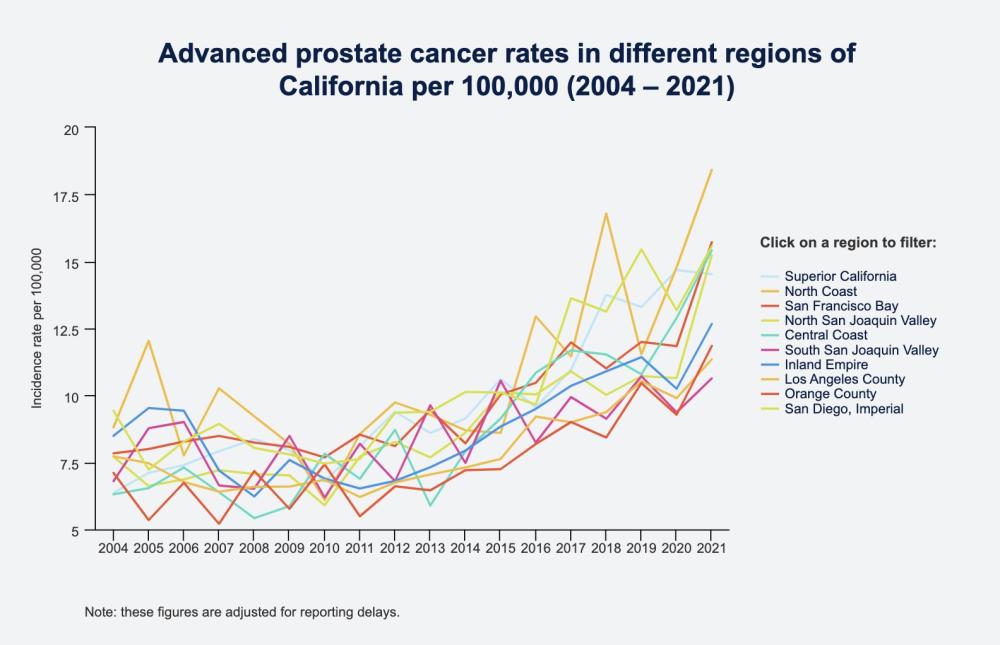
Human prostate cells from an organoid, an artificial construct that resembles an organ. Image by National Cancer Institute, NIH
The incidence of advanced prostate cancer in California rose markedly in the decade since doctors stopped routinely screening all men for the disease, according to a new study by UC San Francisco.
After declining for many years, the death rate from the disease also plateaued in most regions across the state.
The findings reinforce the need for screening that can identify potentially fatal tumors without raising false alarms about ones that pose no threat to the patient.
The study appears Jan. 27 in JAMA Network Open.
“This overall rising trend is alarming and has occurred across age groups, regions of California, races and ethnicities,” said lead author Erin L. Van Blarigan, ScD, UCSF associate professor of Epidemiology & Biostatistics and Urology.
“Our data point to how urgent this problem is,” said Van Blarigan, who is also with the UCSF Helen Diller Family Comprehensive Cancer Center. “Figuring out the best way to screen for prostate cancer continues to be a challenge for researchers and doctors. Without screening, the number of men diagnosed with advanced prostate cancer – when treatments are less effective – increases fast.”

The challenge of screening for prostate cancer
Among men in the U.S., prostate cancer is the most common cancer and second-leading cause of cancer deaths. While some tumors are aggressive and can lead to death, the majority are low-grade and never spread.
The most frequently used screening tool is PSA testing (prostate specific antigen), which does not differentiate between aggressive or non-aggressive tumors, leading many men to be diagnosed with cancers that would not hurt them in the long run.